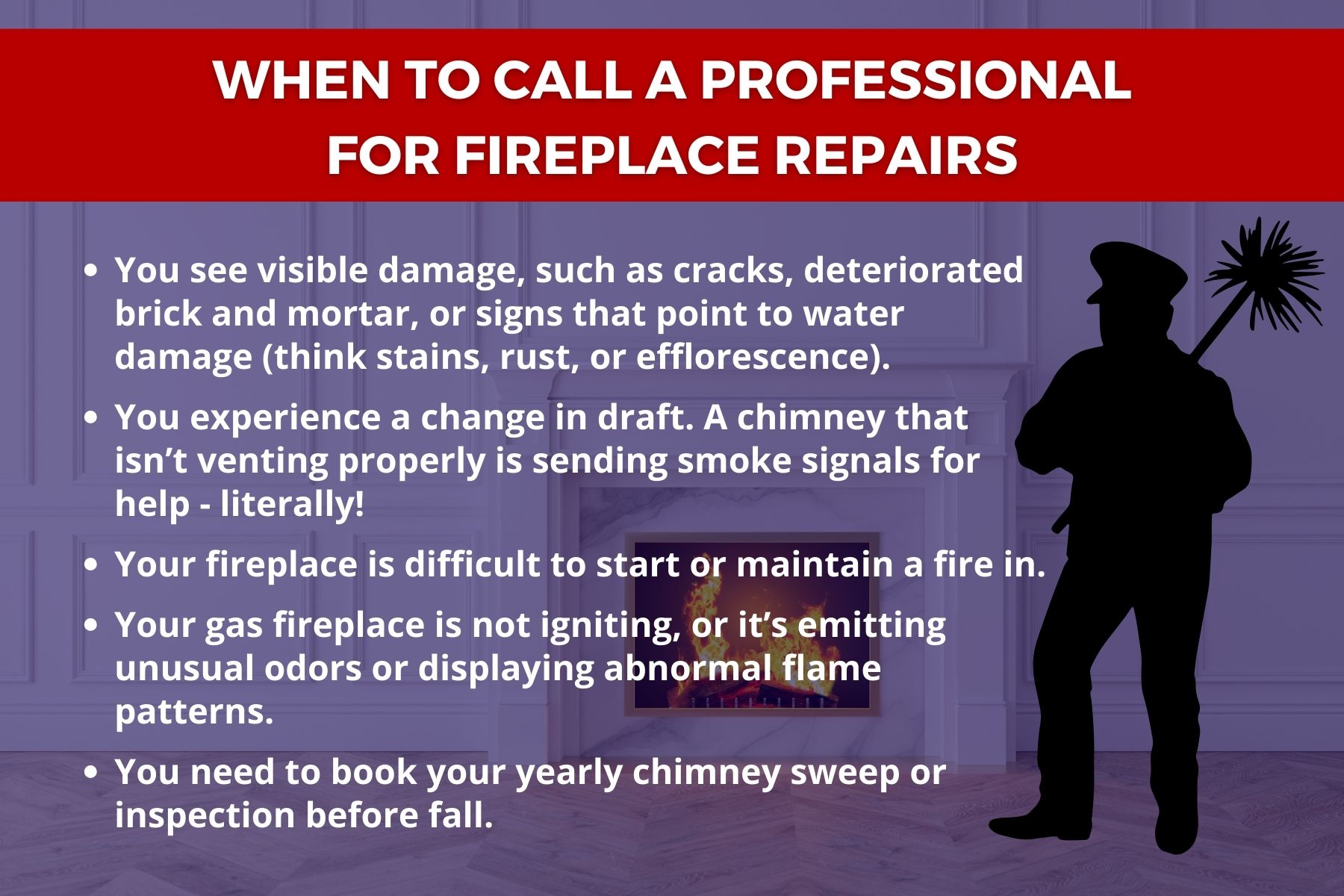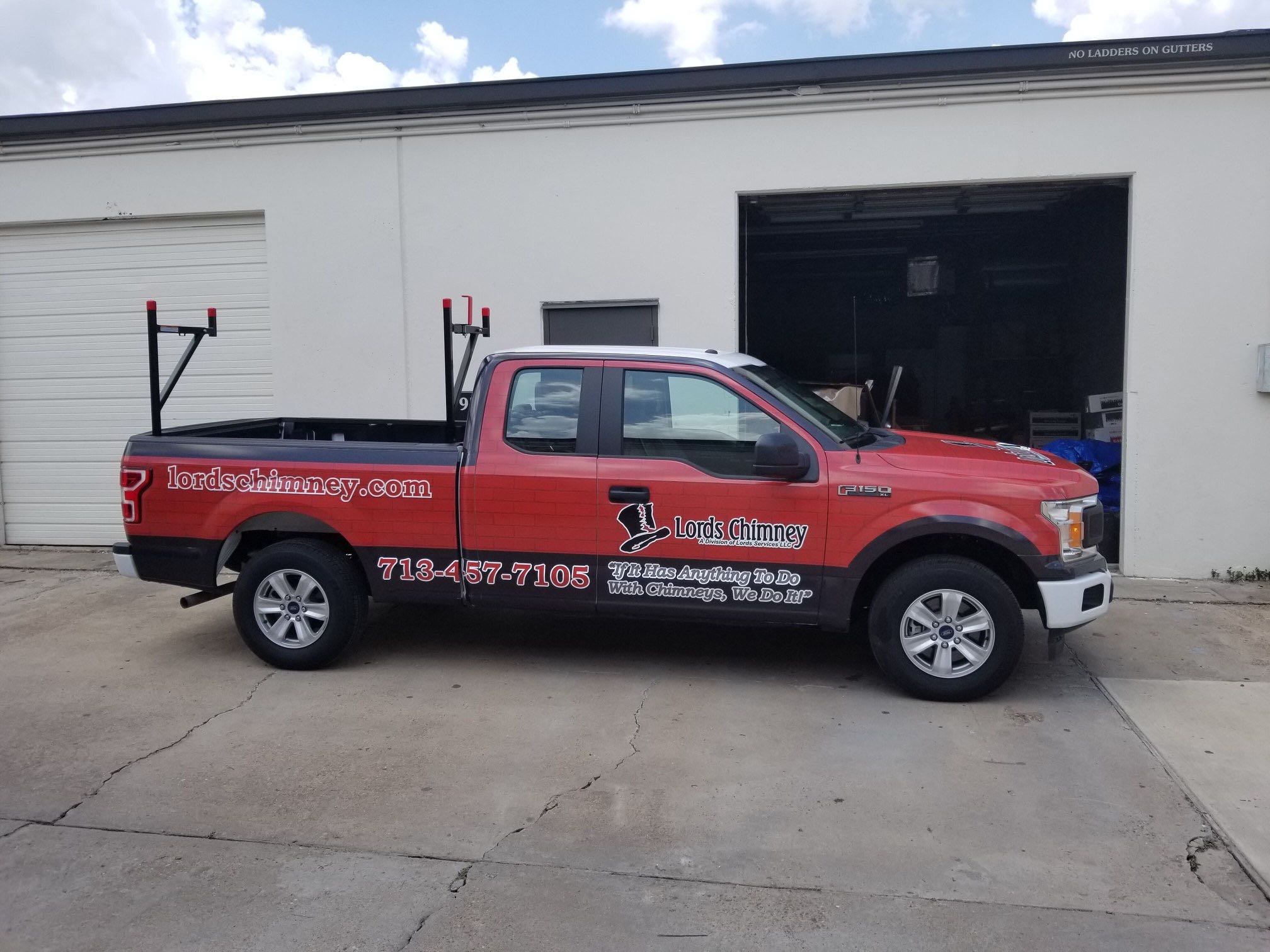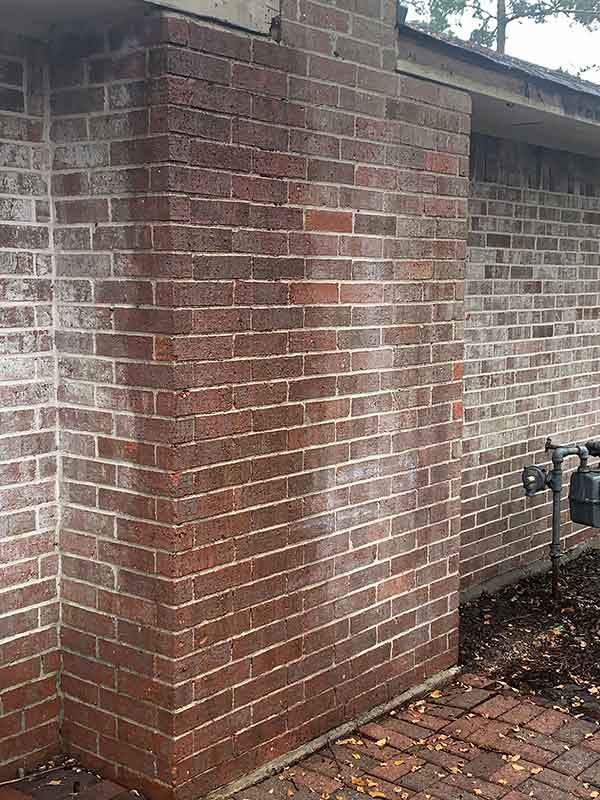URGENT!
Due to the weather, we are experiencing intermittent power outage and loss of internet. Please expect delays and or rescheduling of appointments during this time. We will reach out to you as soon as we can. Stay warm and stay safe!
Owning a home can be a dream come true, but it definitely comes with a hefty price tag. Between the mortgage, property taxes, and insurance, it’s no surprise many homeowners explore do-it-yourself (DIY) solutions for repairs and maintenance.
Before you grab your toolbox, though, let’s talk about chimney and fireplace repair – and when a DIY approach can be a safe bet versus when it’s best to call in a licensed professional.
At first glance, you might think your fireplace is just a cozy spot to relax on a chilly night. After all, you build a fire and the smoke goes up the chimney. Doesn’t sound too complicated, right? But if you take a closer look, you’ll actually find that your chimney and fireplace are a complex system that requires special attention to function safely and efficiently.
Within that system, numerous components work together to prevent smoke inhalation, chimney fires, and even structural damage to your home. This includes the firebox, flue, chimney cap, chimney crown, and damper…just to name a few.
On top of helping your system function safely and efficiently, a certified chimney technician’s regular maintenance can help extend the lifespan of your fireplace and chimney. By catching minor issues early on, you can prevent them from turning into expensive repairs down the road. Let us help you keep your home safe and warm for years to come! Call or book online today.

Let’s be honest – tackling home improvement projects can be incredibly satisfying. I mean, who doesn’t love crossing something off that never-ending to-do list…all while saving a buck or two in the process? But when it comes to fireplace repairs, it’s important to know when to call in the experts. Here are some indicators that your fireplace needs a chimney technician:
When it comes to your fireplace and the safety of your home, peace of mind is priceless. At Lord’s Chimney, our team of certified sweeps and technicians understand the importance of a safe and efficient fireplace. That’s why we offer comprehensive solutions to meet all of your fireplace concerns. We want you to feel confident turning to us every time a need arises.
All of our technicians are highly trained and experienced in diagnosing and repairing all types of fireplace and chimney issues. Whether you’re experiencing a minor chimney leak or need help troubleshooting issues with your gas fireplace, we would be happy to help.
Give Lord’s Chimney a call today at 346-250-4453 or request an appointment on our website.
So, you have a fireplace, but it doesn’t get much use. You use it once or twice a year (maybe on a colder day or around the holidays), but other than that it mainly serves as an attractive focal point in your home. Because of this, it shouldn’t need much professional care or maintenance. …right?
Wrong! In fact, believe it or not, refraining from using your fireplace typically causes it to deteriorate more quickly than if you use it on a regular basis.

Like a washer, dryer, refrigerator, or other appliance, your fireplace needs regular attention, no matter how often it’s used. This especially goes for metal prefabricated fireplaces. Learn more below, and be sure to reach out with any questions! We’d love to do all we can to help you out.
Think of your fireplace like a car. If you let a car sit in your driveway for years on end without ever starting it up or taking it on a drive, would you expect it to work perfectly when you eventually try to drive it again? Not likely. Fluids likely will have pooled, your battery will probably be dead, and there’s sure to be weather-related wear and tear.

The same goes for your fireplace. Rust and warpage will occur more than usual during long periods of unuse, along with countless moisture-related damages, such as mold growth, deterioration, decay, stains, and more.
What happens when we experience another freeze or you just feel like starting a cozy fire after these issues have occurred? Like the car that was left abandoned, the system is simply not going to function correctly. In fact, you may experience dangers such as smoke and fume backup, an increased risk of house fire, exposure to harmful gases, and more.
When we come in to inspect your chimney, we’ll look for things like holes, gaps, signs of animal life, warpage, rust, and more. If we can spot and resolve these issues while they’re still small and manageable, the lifespan of your fireplace could be extended significantly.
We’ll also look for parts that need replacing. Some things, like the chimney cap, are fairly easy and inexpensive to replace if spotted in time. That said, if you ignore a broken cap, your system will be exposed to harmful things (like storms, rain, curious animals, and more) that cause a lot more damage overall.
In the end, purchasing a new chimney cap to ensure your system stays protected is a lot cheaper than investing in a time-consuming and costly rebuild or relining job. And the sooner we can react, the better shape your system will stay in, thus preserving resale value and ensuring you can use it when you need to.
Critters in your fireplace? This means something is wrong up top. Animals should never have easy access to your fireplace, and once they get in they can cause a lot of damage. Along with this, animals that are unable to escape may pass away, leaving you with an even bigger mess on your hands.
Another problem has to do with bird’s nesting materials. If birds set up camp in your chimney (an ideal spot for them), the twigs, leaves, and materials that make up their nests can clog things up and affect airflow. A system that cannot properly vent doesn’t do anyone any good. Be sure to get a sweep in to look things over so you can avoid those uninvited guests – especially this time of year.
If your chimney was damaged due to a natural disaster like a lightning strike, hurricane, tornado, earthquake, flood, or something similar, your insurance company should be covering the costs to repair it. Unfortunately, they often look for ways around this.
If you have no records on your fireplace, then your insurance company could easily deny your claim stating that there’s no proof the damage caused was due to the event that had just occurred.
That said, if you have a report from your chimney company showing that at the last yearly inspection your system was just fine, getting that money you need for repairs, restorations, and replacement parts won’t be such a challenge.
Before buying a home, we strongly advise getting a video inspection. This ensures you don’t get caught with big repairs after you finalize the sale.
Home inspectors will tell you if you should have it cleaned or have something looked into, but there’s no way for them to gauge just how extensive certain damage can be. All too often people sign the papers on their dream home, only to realize later that they’re now responsible for thousands of dollars worth of repairs.
Also, keep in mind that if you bought a house and no one has ever used the fireplace, there’s typically a reason for that. The previous homeowner may have used it once only to have something go wrong and never use it again. And if you see freshly painted brick? There are likely smoke stains underneath.
In the end, getting that level 2 inspection done is always worth the peace of mind you gain in the end.
The big takeaway from all of this? If you want to use your fireplace at all – even once – you need an inspection. Even if the system is brand new or rarely used, an inspection is vital. Professional insight can make all the difference when it comes to how safely and efficiently your system operates down the line.
Anything specific you need covered? Send us a message! We’d be happy to answer any and all of your questions. You can reach out to us through our website, give us a call, or even follow us on Facebook or Youtube. It’s Lords Chimney’s goal to keep you as up to date and informed as possible!
Whether it’s a musty or moldy smell, a soft drip-drip sound coming from the chimney, or a puddle of water at the bottom of the firebox, a leaky chimney is a problem that cannot be ignored. Left unrepaired, even minor chimney leaks can create major damage throughout your fireplace system.
Thankfully, leaky chimneys don’t have to be a chronic problem. Identifying the source of the water entry and fixing your leaky chimney as soon as possible can prevent serious water damage to your fireplace system or home.
Chimneys are built to stand strong against the elements; however, there are still a number of points where water can work its way into the chimney system. The following are some of the most common causes of chimney leaks.
Chimney cap: The chimney cap protects the top of the chimney and keeps moisture, animals, and debris from falling into the chimney. A damaged chimney cap can allow water into the flue, causing damage throughout the fireplace and chimney structure.
Chimney crown: Often confused with the chimney cap, the chimney crown is a mortar slab that seals the top of the chimney. Chimney crowns should have small overhangs as well as be built with slightly sloped edges to prevent water from pooling on the top. Chimney crowns can deteriorate over time due to prolonged exposure to the elements; this creates cracks that allow moisture into the chimney.
Flashing: Flashing is the watertight metal strips that seals the joint between the chimney and the roof. Over time, flashing can lose its seal due to overexposure to the elements; flashing can also be damaged by storms or animals.
Masonry damage: Without regular maintenance, bricks and mortar can begin to deteriorate over time. The freeze thaw process – which causes water in bricks to freeze and expand – is the most common cause of water damage to masonry.
When it comes to fixing a leaky chimney, the most important step is to find and repair the cause of the chimney leak. Repairing the water damage without first removing the cause of the chimney leak will only lead to recurrent water problems. By uncovering the root cause of the chimney leak, you can rest assured that the water damage will not return once the necessary repairs have been made.
For chimneys with damaged masonry, tuckpointing may be used to repair or replace damaged bricks and mortar. During the tuckpointing process, small areas of damaged masonry are carefully removed before the new bricks and mortar are put in; this can help strengthen the chimney structure and help avoid the costs of rebuilding the entire chimney.
Another great way to prevent chimney leaks and water damage is by having your chimney waterproofed. Professionally waterproofing a chimney can seal and protect the masonry from water damage while still allowing the bricks to retain their semi-porous nature.
If you have a leaky chimney, trust the experts at Lords Chimney to repair it. Contact us today to schedule an appointment so we can help resolve your chimney leaks!
Every time you burn wood in your fireplace or wood stove, condensation forms on your chimney’s flue. That condensation forms a dark, tar-like, highly combustible substance called creosote. When creosote builds up in your chimney, it can lead to a damaging and dangerous chimney fire, or it can force carbon dioxide back into your home, endangering your family.
Creosote sweeping logs promise a solution. They claim to reduce creosote buildup in your chimney simply by burning them in your chimney. Some such logs carry the seal of approval of the Chimney Safety Institute of America (CSIA), but even the CSIA acknowledges that the logs are not a replacement for your annual chimney sweeping and inspection by a CSIA-certified chimney sweep.
Creosote sweeping logs work by sending chemicals up your chimney that react with the creosote, causing it to flake away and fall back down your chimney to your firebox, where it either burns up or can be swept away. At best, the logs only remove up to 60 percent of the creosote from you chimney over a 15-day period. That means that creosote still can build up to dangerous levels within your chimney, blocking smoke from leaving your chimney and potentially igniting a chimney fire.
Additionally, many fireplaces aren’t a straight vertical channel. That means creosote can fall to and gather on your chimney’s horizontal surfaces, where it can build up. If your chimney is a straight vertical line, the creosote that falls into the firebox can cause flare ups that can harm your hearth or someone standing near it.
Your annual chimney sweeping is more than just a cleaning. Your certified chimney sweep also inspects your chimney for structural damage, water leaks, crumbling mortar, and other problems. A creosote sweeping log simply can’t help you identify and solve problems with your chimney. Missing your annual chimney inspection gives small problems, like a minor leak, time to grow into a major problem that potentially will be expensive to repair.
More importantly, your certified chimney sweep looks for problems that could lead to a chimney fire or carbon monoxide poisoning. That includes animals that have nested in your chimney or chimney fires that have gone undetected.
While the CSIA recognizes that creosote sweeping logs can be a valuable piece of chimney maintenance, eliminating some creosote in between professional chimney sweepings, replacing your annual chimney sweeping and inspection with a creosote sweeping log is dangerous both for your home and your family. If you’re overdue for your annual chimney sweeping and inspection, call the CSIA-certified chimney sweeps at Lords Chimney. We’ll make sure that your chimney is creosote-free and ready to burn safely this winter.
When stains appear on the sides of a chimney, many homeowners falsely assume it is a natural part of an aging chimney. Unfortunately, chimney discoloration is often more than just a simple eyesore. Chimney stains and discoloration may indicate the presence of damage or other problems. The following are five of the most common kinds – and causes – of chimney discoloration.
Black stains on interior masonry are caused by soot buildup. Soot staining is often the sign of a chimney that has not been properly cleaned or maintained. Likewise, soot stains can also be caused by burning the wrong materials, such as green wood or paper and cardboard.
While soot stains are relatively common on older masonry chimneys, gas fireplaces should never have soot stains. Soot stains, especially those around the top of the chimney, indicate that there is a problem with the gas fireplace and the fuel is not burning correctly; soot staining on gas fireplaces can sometimes indicate a carbon monoxide leak.
Brown and black staining around the chimney cap or down the sides of the chimney structure is one of the most common kinds of chimney stains. While most homeowners assume this kind of discoloration is simply staining from soot, it is typically caused by excessive creosote buildup in the flue. If a chimney is not regularly swept, creosote can build up to the point where runoff stains the top and sides of the chimney. Because creosote staining is so similar to soot staining, a chimney sweep may be needed to evaluate the difference between the two.
Green or dark green discoloration on a chimney is caused by the growth of mold and algae. This kind of green staining is most commonly seen in areas where water directly flows. Chimneys without a lip on the chimney crown may be particularly susceptible to algae or mold growth as the water travels over the masonry.
Red and brown rust stains are almost exclusively seen with prefabricated or metal chimneys. Because factory build chimneys have metal chase covers, they are prone to rusting. When this occurs, dark brown, red, and orange rust stains will begin to streak down the sides of the chimney chase. If rust staining is noticed, the chimney should be inspected immediately for signs of water damage caused by a chimney leak.
White stains on masonry structures are known as efflorescence. As water in the brick evaporates, it leaves behind mineral salt which then creates powdery white or crystalline discolorations on the masonry of the chimney. Exterior efflorescence is usually harmless and caused by ground or rain water. However, interior efflorescence may indicate the presence of a chimney leak.
Chimney stains do more than just affect your home’s curb appeal; they can also indicate the presence of a serious chimney problem. Schedule an appointment with Lords Chimney today to find out if your chimney discoloration is cosmetic or caused by something more serious.